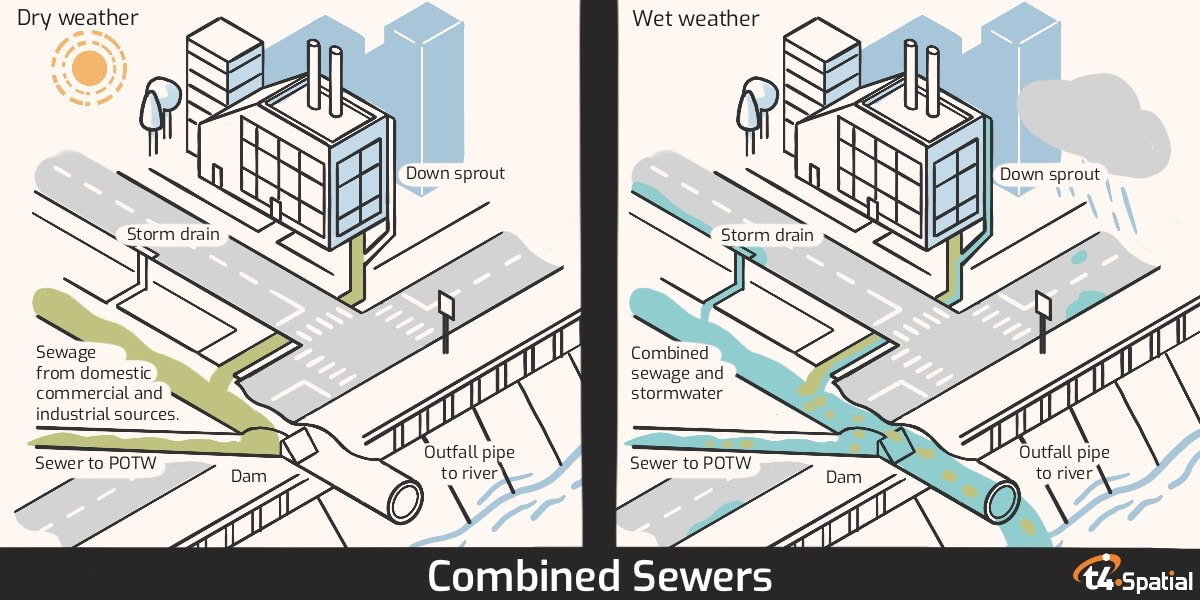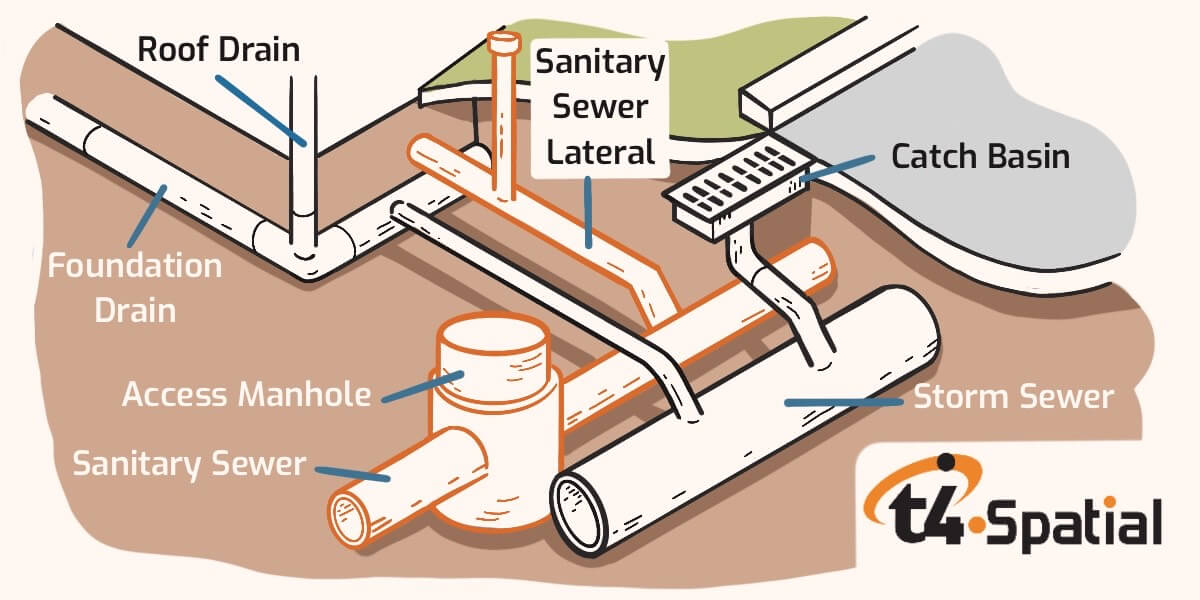During this time when people are spending more time at home than usual, we thought it would be good to publish an article about how sewer systems work. Possibly due to the infamous coronavirus toilet paper shortage, there has been a significant increase in sanitary wipes, paper towels, rags and more coming into wastewater facilities. Many residential plumbers are reporting increased house-calls due to blocked sewers where they later recover rags and articles of clothing from the pipes. It is our goal with this article to paint a bigger picture of what happens after the flush.
There are three types of modern sewer systems: Sanitary sewers (also called foul sewers), storm sewers (also called surface water sewers), and combined sewers.
In this brief article we’ll go over the basics of each…
Combined sewers
Combined sewers are well….combined! That is, they use a single pipe to carry both wastewater and storm runoff water to wastewater plants. They aren’t used much anymore because when it rains a lot the system can’t handle both the surface water and the wastewater and this causes the sewer to overflow. Because of this, new systems separate storm sewers from sanitary sewers.
How they work is best explained via an illustration…

In the image above you can see that both the wastewater from buildings and the storm runoff water flow into the same pipe. During dry weather the combined wastewater and storm water flow toward the wastewater treatment plant and not into the river.
The image on the right shows you what happens in a combined sewer during wet weather. The increased runoff water combined with the wastewater from buildings is too much for the pipe to handle and the result is that some of it spills out into the river. (These are called combined sewer overflow (CSO) events.) In other words, during extremely wet weather combined sewers are dumping raw sewage and industrial waste into rivers and other bodies of water. This results in contaminated drinking water and other types of environmental damage. In some cases, it might even be necessary to boil water before it’s safe to drink or use.
Combined sewer overflow events can also cause too much wastewater to reach sewage treatment plants. When this happens the plant is not able to treat the wastewater properly.
Even worse, during extremely severe weather events combined sewers can even cause wastewater – including raw sewage – to back-up into inhabited buildings. The cost to clean up this stinky mess is no insignificant amount.
Sanitary sewers
Sanitary sewers carry wastewater from homes and businesses to wastewater treatment plants. They consist of pipes, manholes, and pumping stations and their role is to maintain water quality because it’s necessary for good public health.
Here’s how they work…
When you flush the toilet or wash dishes in the kitchen sink that water is carried away from your home (or business) through relatively small pipes to the sewer main in the street or to your septic system. The pipes that take waste from your home (or business) to the sewer main are only large enough to remove toilet paper and human waste. From there it continues on until it reaches a wastewater treatment plant where the wastewater is treated so as to remove pollutants before it returns to the environment. When non-biodegradable items are flushed, such as sanitary wipes, this interferes the public wastewater system (potentially causing blockages and overflows) and with processes at the plant.
Usually, sanitary sewers use gravity to carry the wastewater away. However, in low-lying areas pumps are sometimes used when the wastewater needs to reach an area that’s at a higher elevation.
Sanitary sewers are accessed via manholes for routine maintenance and repair. Clean-outs located on your property provide access to the part of the sanitary sewer that goes from your home to the sewer main in the street. If there’s a blockage in this pipe it can be accessed via the clean-out.

Storm sewers
Storm sewers (also called surface sewers) carry rainwater and melting snow (storm sewers are not designed to carry wastewater) from roofs and roads and channel it into streams, rivers, and other bodies of water.
Here’s how they work…
When it rains (or when snow melts) water enters storm sewers via manholes, pipes, storm drain inlets, open ditches, etc. This water is then carried away until it eventually flows directly into streams, rivers, and waterways without having been treated. This is why you should never put any kind of hazardous waste down a storm drain. This includes things like paint, solvents, used motor oil, and cleaning liquids. They can damage rivers, lakes, wetlands, and even poison wildlife.
Storm sewers can also get clogged with leaves, litter, and other debris and when this happens there can be flooding.
For more information on sewers and wastewater treatment…
How do sewer systems work?
https://www.youtube.com/watch?v=CoFuQZBPCKo
What is a storm sewer?
https://www.youtube.com/watch?v=Rt9bOdgKhMI
How do wastewater treatment plants work?
https://www.youtube.com/watch?v=FvPakzqM3h8